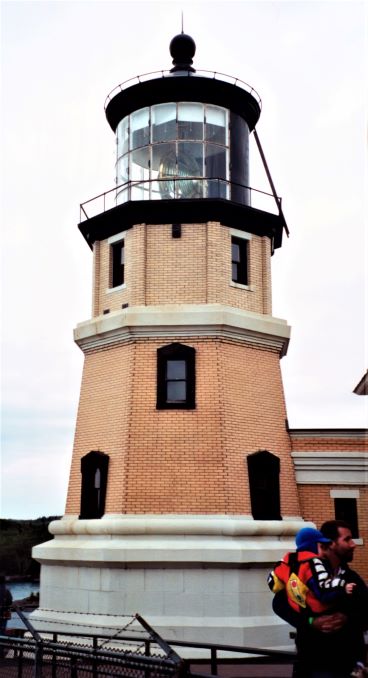Minnesota’s Split Rock Lighthouse is one of the most picturesque beacons in the world, guiding the ships that navigate the dangerous waters of Lake Superior.
Split Rock Origin Story

Even though Lake Superior is “just” a lake, it has some of the most treacherous waters in the world. Ships were routinely caught in storms and sent to the bottom of Gitche Gumee.
The area of western Lake Superior has been an important mining area since the late 1800s. Ore was taken from mines in the Vermilion range of Minnesota and Michigan’s Upper Peninsula and transported south and east via the Great Lakes by barge.
November 1905 was especially destructive for the ships and men working them on Lake Superior. On the 27th, a wicked system called the Mataafa Storm kicked up on the lake. Winds of 80mph along with blinding snow squalls and high tide storm surges made it one of the worst to hit the lake.
An astonishing 29 ships were damaged or destroyed and 36 men onboard the vessels were killed before the storm finally moved out on November 28th. One of the ships to sink was the Madeira.
Sinking of the Madeira
The Madeira was a schooner barge, a type of shipping barge that was towed by a steamship. The ship was built by the Chicago Shipbuilding Company in 1900.
When the storm hit Lake Superior in full force on November 28th, 1905, the Madeira was being towed by a steamship named William Edenborn. Under 80mph winds and whipping snow, the captain of the Edenborn cut the Madeira loose. Shortly thereafter, the Madeira crashed into Gold Rock and sank.
One of the Madeira’s crewmen took a safety line and jumped to shore. He led eight other crewmen to safety, but the First Mate went down with the ship and died. Two days later, the crewmen were rescued by the tugboat Edna D.
Building of Split Rock
After the destructive Madeira storm of 1905, it was apparent that a beacon needed to be built to help guide the vessels on Lake Superior.
Split Rock was chosen as the site. Building on top of the 133 sheer face cliff meant that a tall tower wasn’t needed. Instead, a 54 foot tower with a unique octagonal shape was constructed with an attached keeper’s quarters.
All the materials for construction were brought in by ship and lifted to the top of the cliff by crane since there were no roads leading to Split Rock. The lighthouse was completed in 1910.
Split Rock as a tourist attraction

Because of it’s dramatic setting on a cliff, the Split Rock Lighthouse became a popular tourist attraction. In 1924 a road was built to give better access to the light.
Over a century after it was first lit, the Split Rock Lighthouse remains a popular spot, although the tower itself is currently closed due to Covid, But, the Minnesota Historical Society who operated the lighthouse and grounds says the tower will reopen when it is safe to do so.
In the meantime, the grounds to the lighthouse and the spectacular views that go with it are open. Advance tickets are required to visit.
About the Author

Brent Petersen is the Editor-in-Chief of Destination Eat Drink. He currently resides in Setubal, Portugal. Brent has written the novel “Truffle Hunt” (Eckhartz Press) and the short story collection “That Bird.” He’s also written dozens of foodie travel guides to cities around the world on Destination Eat Drink, including in-depth eating and drinking guides to Lisbon, Porto, Sintra, Monsaraz, and Evora in Portugal. Brent’s podcast, also called Destination Eat Drink, is available on all major podcasting platforms and is distributed by the Radio Misfits Podcast Network.
